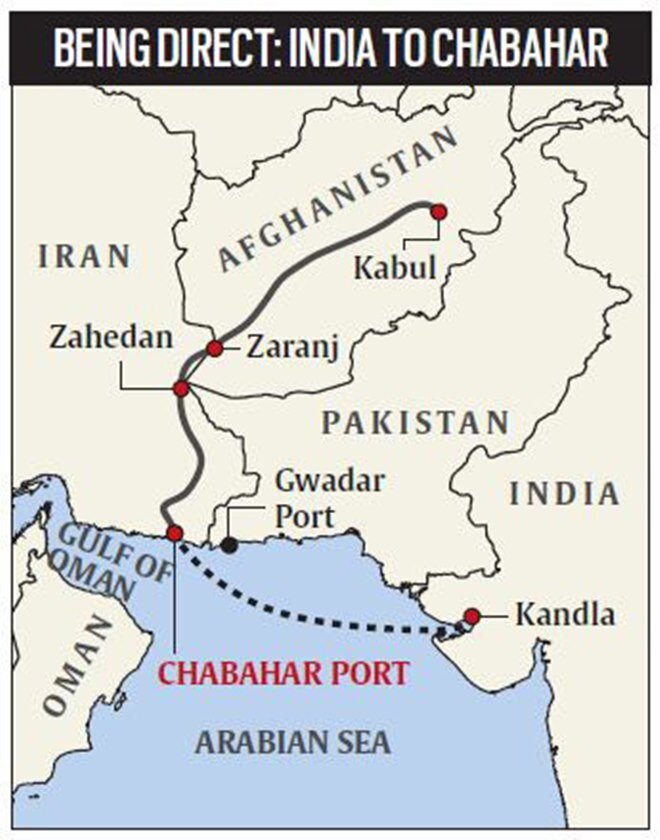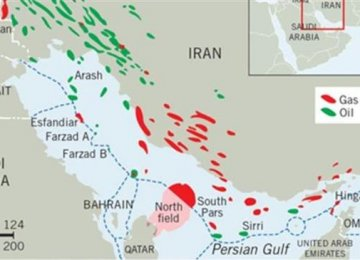Chabahar Project | 10 Nov 2020
Why in News
Recently, Iran’s Port and Maritime Organisation (PMO) has conveyed to India a request for locomotives and signalling equipment for the Chabahar-Zahedan railway line.
- Iran has been facing difficulty in procuring them directly due to the sanctions imposed by the USA.
- Iran has also asked India to activate the USD 150 million credit line which was offered to it by India during the Iranian President's visit in 2018.
Chabahar Port
- It is located on the Gulf of Oman and is only 72 km away from the Gwadar port in Pakistan which has been developed by China.
- The port serves as the only oceanic port of Iran and consists of two separate ports named Shahid Beheshti and Shahid Kalantari.]
Key Points
- Background:
- In May 2016, India, Iran and Afghanistan signed the trilateral agreement which entailed the establishment of Transit and Transport Corridor among them using Chabahar port in Iran as one of the regional hubs for sea transportation.
- Construction of a rail line from Chabahar port to Zahedan, along the border with Afghanistan as an alternate trade route to Afghanistan and Central Asia, was also a part of it.
- The state-owned Indian Railways Construction Ltd. (IRCON) signed a Memorandum of Understanding (MoU) with the Iranian Rail Ministry to provide all services, superstructure work and financing (around USD 1.6 billion).
- Reasons for Excluding India:
- Iran’s Stand:
- In July 2020, Iran decided to proceed with the rail line construction on its own, citing delays from the Indian side in beginning and funding the project.
- India’s Stand:
- IRCON completed the site inspection and feasibility report, and had been waiting for the Iranian side to appoint a nodal authority.
- Although the project has secured a special waiver from the USA, India is hesitant to deal with the construction company which has links with the Islamic Revolutionary Guard Corps (IRGC) and is under the sanctions.
- The IRGC is a hard-line force which operates its own military infrastructure in parallel to Iran’s regular armed forces. In April 2020, it launched Iran’s first military satellite Noor.
- Fear of sanctions by the USA has also impacted Indian interest in the Farzad-B gas field project of Iran.
- Iran’s Stand:
- Significance of Chabahar Port for India:
- Trade: It is being considered a gateway to golden opportunities for trade by the three countries with other Central Asian countries in the wake of Pakistan denying transit access to India.
- Security: China is aggressively pursuing its own Belt and Road Initiative (BRI) under the One Belt One Road (OBOR) project. The port can also act as a counter to Pakistan’s Gwadar Port, which is being developed with Chinese investment.
- Connectivity: In future, the Chabahar project and the International North South Transport Corridor (INSTC) will complement each other by optimising Indian connectivity with Russia and Eurasia.
- Evolving Scenarios:
- With the results of the USA elections, both India and Iran look for the possibile ease of sanctions allowing for increased engagements.
- India is also keeping an eye on the negotiations on a 25-year strategic cooperation agreement between China and Iran (worth USD 400 billion) which could fund other parts of the Chabahar development, including a free trade zone along the Makran coast, and oil infrastructure projects, impinging on India's strategic ties with Iran.
Farzad-B Gas Field
- It is located in Persian Gulf (Iran) and the contract for exploration of the field was signed in 2002 by Indian consortium comprising Oil and Natural Gas Corporation Limited (ONGC) Videsh, Indian Oil Corporation and Oil India.
- The contract expired in 2009 after declaration of commerciality of the field, based on the gas discovery. Since then, the consortium has been trying to secure the contract for development of the field.
- The major dispute between India and Iran was over setting up of two pipelines, and also over money to be quoted on the development plan.
- Around 75% of the deal was finalised by May 2018, when the USA unilaterally withdrew from the nuclear deal and announced sanctions on Iran.
- In January 2020, Iran clarified that it would develop the field on its own and would like to involve India appropriately at a later stage.
Way Forward
- In a world where connectivity is seen as the new currency, India’s loss on account of these projects can become gain for some other country, especially China. Thus, India needs to play a balancing act between the USA and Iran and proactively protect its interest in the region.
- As an emerging power, India cannot remain confined to South Asia and a peaceful extended neighbourhood (Iran-Afghanistan) is not only good for trade and energy security but also plays a vital role in India's aspirations of becoming a superpower.


